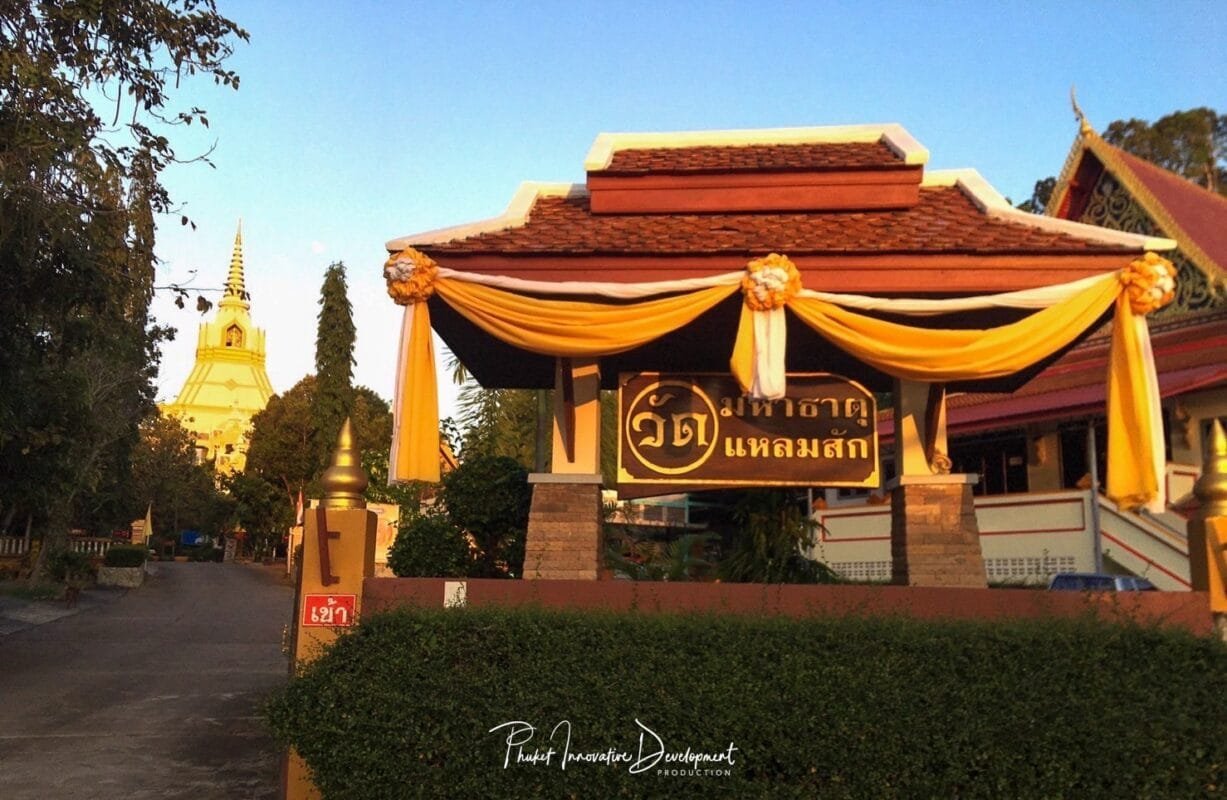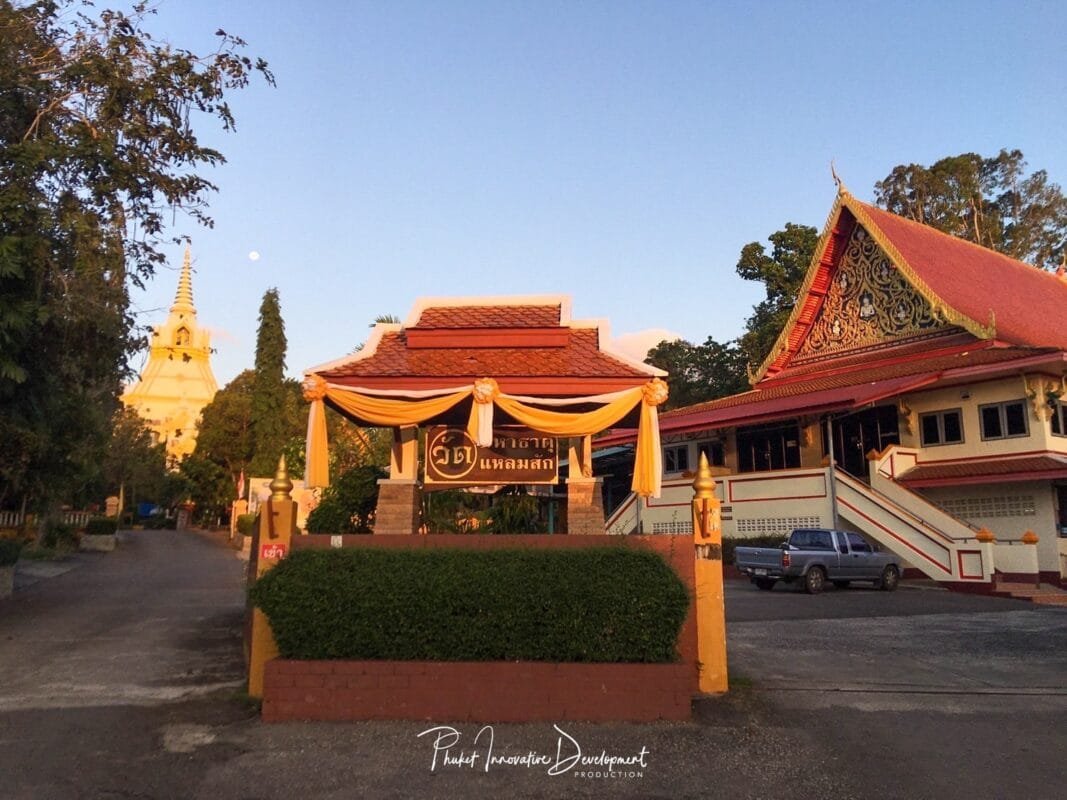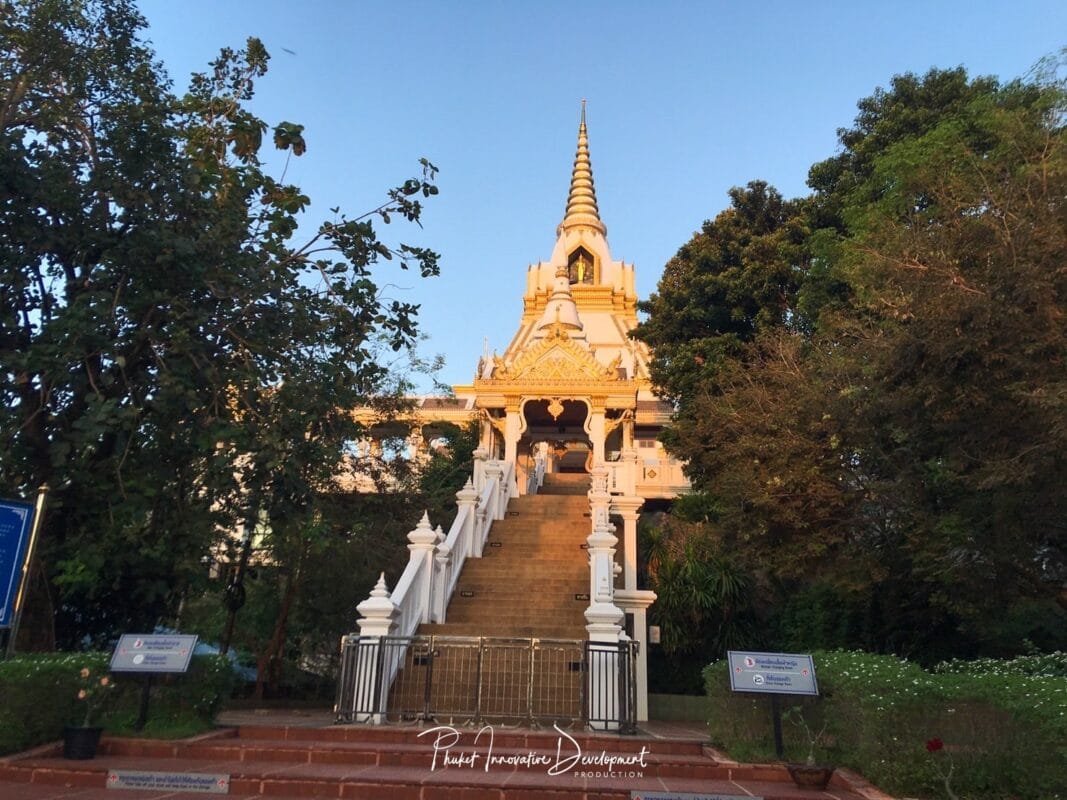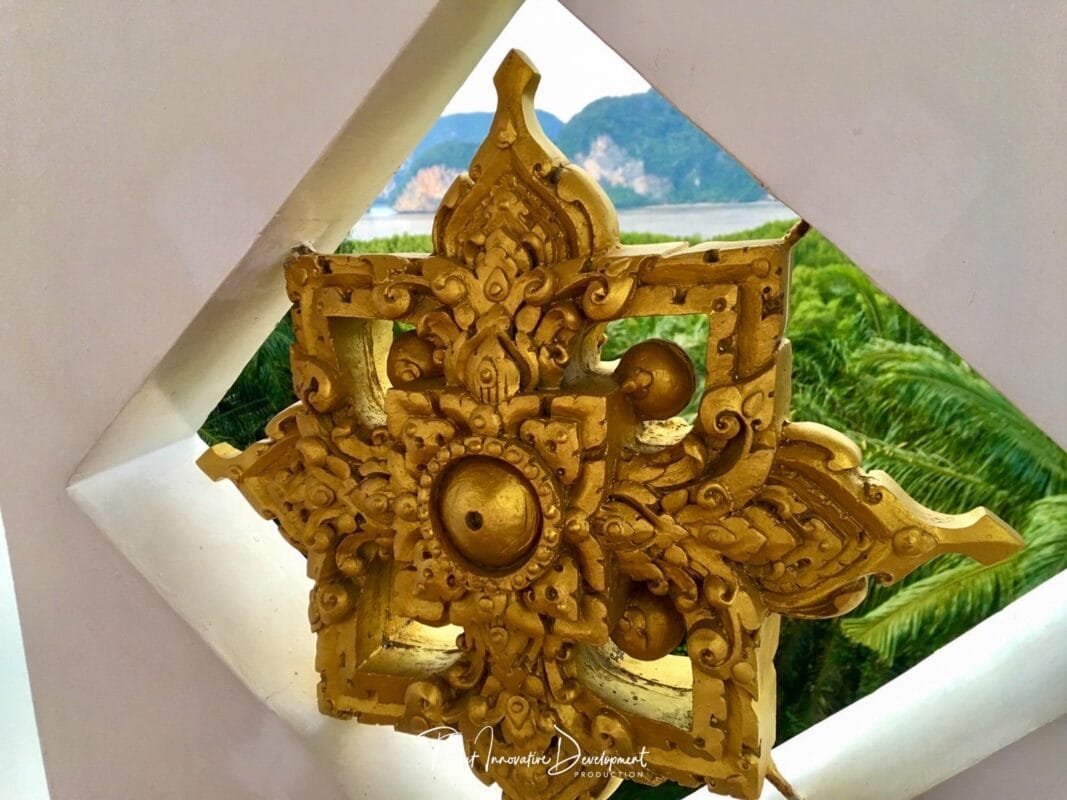
The temple has been respected and revered by the local people for a long time. Inside the temple, there is a beautiful large white pagoda that enshrines the relics for Buddhists to pay homage to. Additionally, the upper terrace provides a stunning panoramic view of the enchanting Andaman Sea.

Originally, in the Buddhist era 2490 (1947 B.E.), this area was just vacant land. When the local residents needed to perform religious activities, they had to travel to Wat Sathit Pottharam, which was about 4.5 kilometers away. During that time, various revered monks visited and resided in this area for a period. Monks such as Phra Ajarn Amphan, Luang Pu La Kemapatto, Phra Ajarn At, Phra Ajarn Kamphai, and Phra Ajarn Janram. In response to this, the villagers, monks, and forestry officials established meditation halls, monk quarters, and an observatory, gradually forming the Lamsak Monastery in the subsequent years.


In the Buddhist year 2527 (1984), Phra Ajarn Net Jirapunyo, along with the residents of Lamsak, requested permission to build a temple from the Department of Religious Affairs. The request was approved, and the construction period was set from June 11, 1984, to June 11, 1989. However, since the temple did not own the land, they requested the use of public land for the temple’s location. The Ministry of Interior granted permission for land use according to their request.

On May 15, 1987, the Ministry of Education registered and elevated the status of Lamsak Monastery to Lamsak temple, with Phra Ajarn Net Jirapunyo (Luang Pu Net) as the first abbot. Subsequently, in 2006, Luang Pu Net relinquished the position of abbot due to old age, handing over the responsibility to Phra Chusak Panyasakko, who has been the caretaker of the temple since then, as of the current date in 2007.

Chedi of the Buddha’s relics at Wat Lamsak
In December 2009, His Holiness the Supreme Patriarch Somdet Phra Yanasangworn, the Supreme Patriarch of the Thai Sangha, bestowed sacred relics upon Wat Lamsak. A total of 12 relics were presented to the monks and the temple committee. Subsequently, they initiated the construction of a pagoda to enshrine the sacred relics. The pagoda has dimensions of 45 meters in width, 45 meters in length, and 40 meters in height. Construction commenced on Visakha Bucha Day, May 28, 2010.

1.It is the celebration of the auspicious occasion of the completion of 60th birthday anniversary Her Royal Highness Princess Maha Chakri Sirindhorn, in the year 2015.
2.Celebrate the 90th birthday anniversary of Luang Pu Net Jirapunyo on March 9, 2015.
3.This is a religious object that serves as evidence of the enshrinement of the teachings of the Buddha, on the western coast of the Andaman Sea in the Indian Ocean.


In addition, the construction of the Great Relic Pagoda on this occasion is a continuation of the Southern region’s tradition on the western coast of the Thai Gulf, the Pacific Ocean, and the Andaman Sea, where there have been relics reflecting the prosperity of Buddhism since ancient times. Examples include the Chaiya Pagoda in Surat Thani Province and the Nakhon Si Thammarat Pagoda. However, on the western coast of the Southern region, there has not been a large-scale pagoda that serves as a tangible symbol for the future, demonstrating the prosperity of Buddhism, especially the Thammayut Nikaya tradition. Monks such as Luang Pu Man Phurithatto, Pra Maha Pin Chalito, Luang Pu Tes Tesrangsri, Luang Pu Rian Worarapo, Luang Pu La Kemapatto, and Luang Pu Janram Khemmasiri, among others, have traveled to disseminate the teachings of Buddha in this region.

Details of the Chedi of the Buddha’s relics
The Great Relic Pagoda is a square-shaped structure, 45 meters in width, 45 meters in length, and 40 meters in height, surrounded by a courtyard. It has a single access pathway positioned along the axis of the main Buddha image. At the front of the pagoda’s entrance pathway, there is a pavilion serving as a resting area. The pagoda is divided into two levels around its central core. The lower level is an open terrace, while the inner area of the pagoda is designated for the enshrinement of Buddha images. On the top of the pagoda is a chamber for housing the principal sacred relics, and there are pavilions surrounding the pagoda in all four directions.

The Great Relic Pagoda is a structure designed for the specific purpose of enshrining the principal sacred relics, allowing the public to pay homage to the relics up close. The design of the pagoda features an elevated tiered base, adopting the style of a stupa, reflecting the concept popularized by His Majesty King Mongkut (RAMA IV) , the Great, who laid the foundation for the Thammayut Nikaya Buddhist tradition. The development of this pagoda aligns with the idea of presenting a simple and modern appearance, incorporating selected materials that convey a contemporary and easily maintainable aesthetic. This approach aims to integrate harmoniously with the overall elements of the temple.


The pagoda is adorned with four corner pavilions, and the central pagoda stands on an octagonal base, symbolizing the spreading of the Buddha’s enlightenment in all eight directions. The pagoda is painted in white, evoking a sense of lightness and comfort. It does not feature elaborate windowed pavilions but instead opts for simple external frameworks adorned with lattice patterns for the safety of the structure. The overall display is coordinated, with decorations focused only on the essential components of the central pagoda. The interior of the chamber housing the principal sacred relics is designed with the central point being the altar for Buddha’s relics, adorned with simple decorations, aiming to evoke a sense of tranquility for those who come to pay homage.

Location: https://maps.app.goo.gl/tevHP9tTY1Xj7M259
Information courtesy by: https://watlamsak.org
